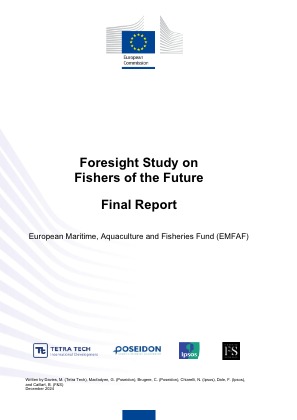Last Edited: 8 months ago
Foresight Study on Fishers of the FutureNovember 2024
Final Report
The study represents the Commission’s commitment, outlined in its 2023 Communication on the functioning of the Common Fisheries Policy (CFP), to address emerging challenges in the sector. It aligns with the Commission's definition of foresight as “the discipline of exploring, anticipating, and shaping the future to inform today’s decision-making.” This participatory study places fishers at its core, integrating their perspectives into the development of future scenarios and fisher profiles to inform strategic policymaking for a sustainable, competitive and resilient EU fishing sector, as part of the wider blue economy. It does not present policy proposals, which was never the intention, rather it serves to stimulate further the important debate on securing and giving a perspective on the future of EU fishers.
European Commission: European Climate, Infrastructure and Environment Executive Agency, F&S, IPSOS, POSEIDON, Tetra Tech, Davies, M., Macfadyen, G., Brugere, C., Chiarelli, N., Dale, F.Caillart, B., Foresight study on fishers of the future – Final report , Publications Office of the European Union, 2024;
Posted on: 15/04/2025

